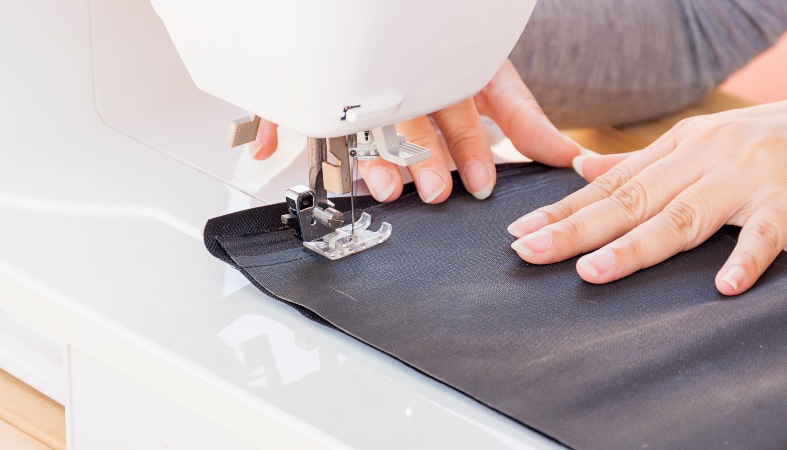Do you know the differences between cotton and viscose? It may not seem like a big deal, but knowing the pros and cons of each material goes a long way in choosing the right mattress and sheets for your needs.
When it comes to mattress materials, many people are unaware of the limitations posed by certain fibers, as some fair better for specific needs, and these fibers are no different. In this article, we are going to go over how both materials are made, what their properties are, and what strengths and weaknesses you may want to consider.
Interesting Properties
In terms of properties, it has the benefit of becoming more durable when wet. This means that it’s an excellent material for absorption and strength in damp situations. These properties make it ideal for things that need high wet strength, as it can withstand normal wash cycles in ways viscose might not.
How Is the Fabric Made?
The process is intricate. Firstly, textile mills purchase large quantities of raw cotton bales, which are then processed in various steps of weaving and knitting to twist the fibers into threads, which become yarn. Once that’s done, the yarn threads are either woven or knitted again into cloth.
Get More Info:
What Is Viscose
This material is a manufactured regenerated cellulose fiber, meaning that, unlike cotton, isn’t natural, despite the fact that some types come from bamboo, but it also isn’t entirely synthetic. The popularity of this has a few reasons behind it, namely that it excels at looking and feeling expensive without being overly costly.
Interesting Properties
This material is effortlessly dyed and colors keep their shade incredibly well. The silky luster of it also stands out against other materials. It maintains these properties all while keeping especially soft, which feels nice against the skin when used as sheets. This material also drapes well.
How Is The Fabric Made?
It comes from the cellulose (or wood pulp) of bamboo plants. By using a chemical solution to dissolve the material, a pulpy substance is obtained and spun into fibers, which are in turn woven into threads. The chemical solvents used in the dissolving process are sulfuric acid, carbon disulfide, and sodium hydroxide.
Production Steps Of Purified Cotton vs. Viscose Rayon
The production steps between both materials vary considerably, with the latter having a lot more steps that are more complicated.
Cotton
- Harvested
- Then cleaned and scoured
- Purified
- Finishing is added
- And finally, dried and prepared for baling
Viscose
- First harvested, debarked, and chipped
- Then put through chemical and hydrapulping processing
- Then blended, screened, and cleaned
- The wood pulp is steeped, shredded and aged, then put through xanthation and dissolved
- Ripened, strained, and put through degasification
- After that, it goes through a wet spinning process and subjected to drawing or stretching
- Finally, a finish is added, then the end product is prepared to be cut and baled.
Read More: Viscose vs. Rayon
Pros and Cons
| Pros | Cons | |
| Cotton | ● Locally grown, better for the environment ● Significantly better wet strength ● Natural | ● More pricey ● Water holds longer, leading to sheets that don’t dry as quickly ● Shrinks |
| Viscose | ● Drapes very well ● Less expensive ● Silky texture ● Dyes easily and keeps colors ● Feels soft and luxurious | ● More production steps, more chemicals and waste ● Weaker than cotton, especially when wet ● Harder to clean and maintain |
Frequently Asked Questions
Is Viscose Material Good Or Bad?
While it does come with its own benefits, consumers may be concerned about both its limitations, as well as its impact on the environment. Because it readily absorbs water and body oils, this could be a problem and lead to discoloring and marking, making it dirtier and weaker. On top of these issues, it’s frequently restricted to dry cleaning only in terms of maintenance, meaning that any sheets and mattresses made with this are more difficult to keep clean without pricey dry cleaning services.
Does Rayon Viscose Shrink?
While cotton demonstrates solid wet strength, viscose does not have the same endurance, with the fibers breaking down when put through wet conditions. Because of this, most tend to be dry clean only, as the structural weakness cannot withstand as well when put through a wash cycle. Read labels carefully when considering bedding.
Conclusion
Regardless of which material you do end up choosing for your bed, you need to be aware of the pros and cons of your choices available, as well as their properties. Cotton lends itself very well to a multitude of conditions, but may not be right for you if you’re concerned about budget and moisture issues.
Viscose fares well in the budget department while also feeling luxurious, but has a larger negative impact on the environment and tends to be somewhat inconvenient when cleaning. Both are used widely in bedding today, and being conscious of how they perform can save you time and headaches.
Jill Zwarensteyn
Editor
About Author
Jill Zwarensteyn is the Editor for Sleep Advisor and a Certified Sleep Science Coach. She is enthusiastic about providing helpful and engaging information on all things sleep and wellness.
Combination Sleeper


